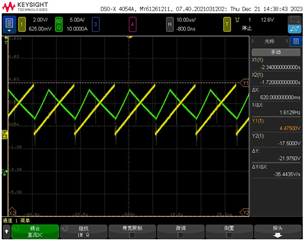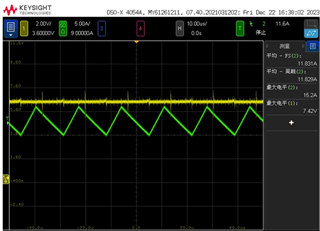Other Parts Discussed in Thread: PMP21943, LM5170, PMP
Dear engineers:
We apply the LM5170 to reverse polarity buck-boost and some problems occurred, the reference design is PMP21943 from TI official website.
Problem1: The inductor current peak protection deviation is extremely large.
According to datasheet, we set RIPK as 57kΩ, theoretical protection point is 31.25A; but actually, it protects about 14A.
We observed the actual value of the inductor current and the sampling signal, and there were no abnormalities. Please help explain why the chip behaves like this.
The waveform is inductor current(GREEN) and Vramp(YELLOW)
The waveform is inductor current(GREEN) and comp pin(YELLOW)



